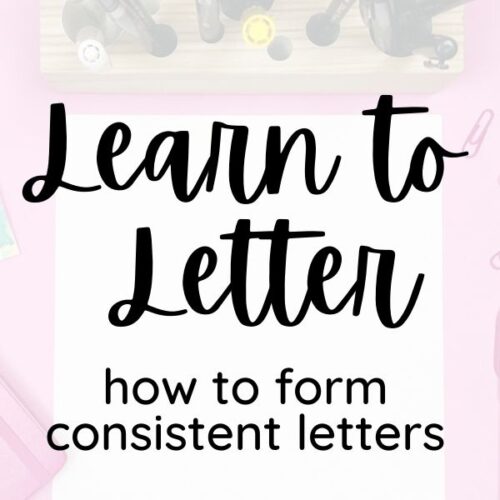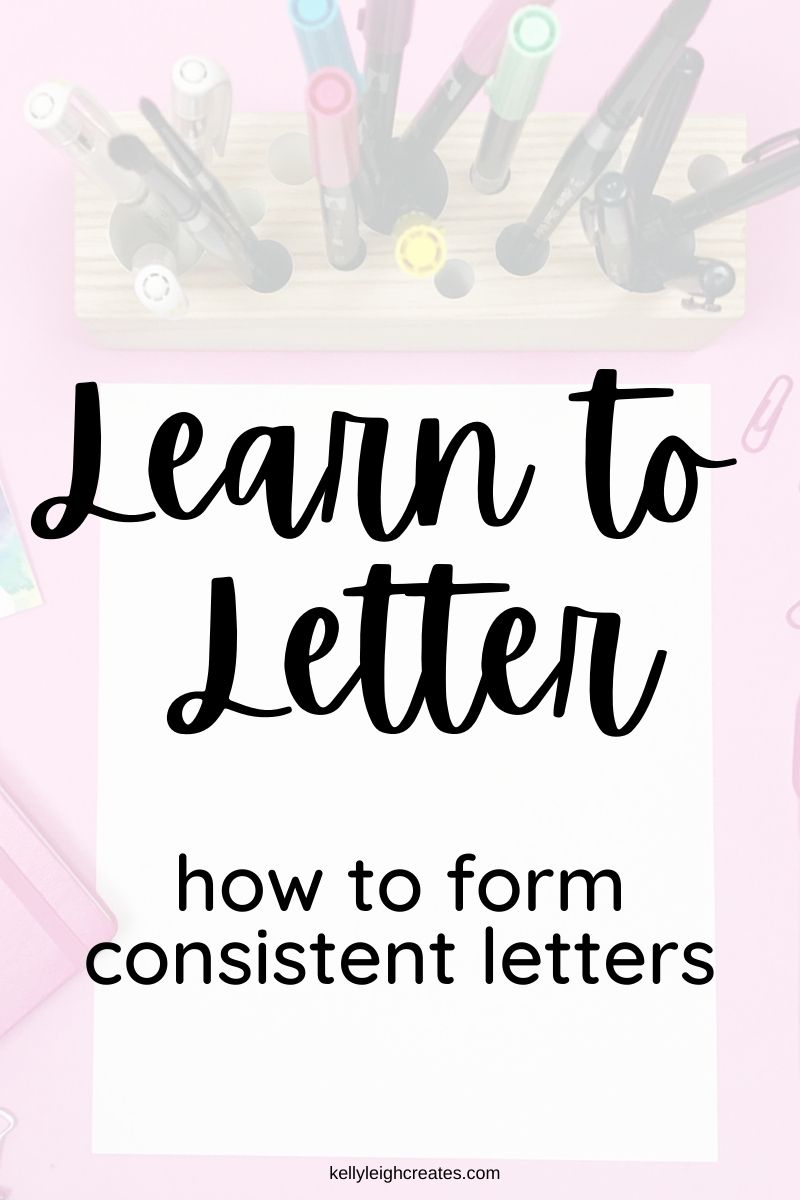Hand Lettering: How to Form Letters
Struggling to form letters correctly? Lettering looks wonky? These tips will teach you how to form letters correctly so your work looks beautiful.
The lines don’t come out straight
Shaky hands
Trouble keeping it uniform
Do these describe your thoughts when you sit down to letter? I hear ya and I’m here to say that it’s common at the beginning of your lettering journey to look at your work and say “ugh”. One of the major reasons that lettering layouts don’t look quite right is because the letters aren’t formed correctly. So today, I’m sharing some tips about how to form consistent, beautiful-looking letters. Follow these tips and your lettering will go from blah to beautiful.


HOW TO FORM LETTERS CORRECTLY
To form letters correctly, you need to get back to the basics. And by basics, I mean the basic lettering strokes. If you do not have a handle on the basic strokes, your letters are going to look wonky. The 8 basic lettering strokes are
- Upstroke
- Downstroke
- Oval
- Underturn
- Overturn
- Combination
- Ascender loop
- Descender loop
Get the 8 basic strokes practice guide here.
Watch the 8 basic strokes video
Once you have mastered the 8 strokes, then you can move onto letters. Each letter is just a combination of one or more strokes. For example. an “o” is an oval. A lowercase “a” is composed of an oval and a downstroke. Study each letter and determine which strokes the letter is made up of. Then, put the strokes onto paper, pausing to reset between each stroke.
Proper brush lettering involves thick downstrokes and thin upstrokes. To achieve this, you need to vary the pressure of the pen on the paper. Heavy pressure is used for downstrokes and light pressure for upstrokes. Practice consistent pressure on every downstroke and upstroke for a uniform look.
To keep your letters consistent in size and spacing, use notebooks or practice sheets that have guides and/or grids. Many people letter in journals that have pages filled with evenly spaced dots. Rhodia is a favorite brand of notebook used by many lettering artists.
Drawing consistent letters takes practice. 10-15 minutes a day is all you need and you will gradually improve over time. My favorite phrase to remember is this:
PROGRESS OVER PERFECTION
MORE LETTERING TUTORIALS
- 10+ Brush Lettering Practice Sheets
- How to Create a Hand Lettering Layout
- Hand Lettering for Beginners: The Ultimate Guide
LOVE IT? PIN IT!



